F/A-18C Hornets have secured Finnish skies since shortly after the end of the Cold War, but are soon to be replaced by the F-35A. An insight in the Finnish Air Force’s multi-role aircraft that began its career as a dedicated air defence fighter.
Text and photos: Emiel Sloot
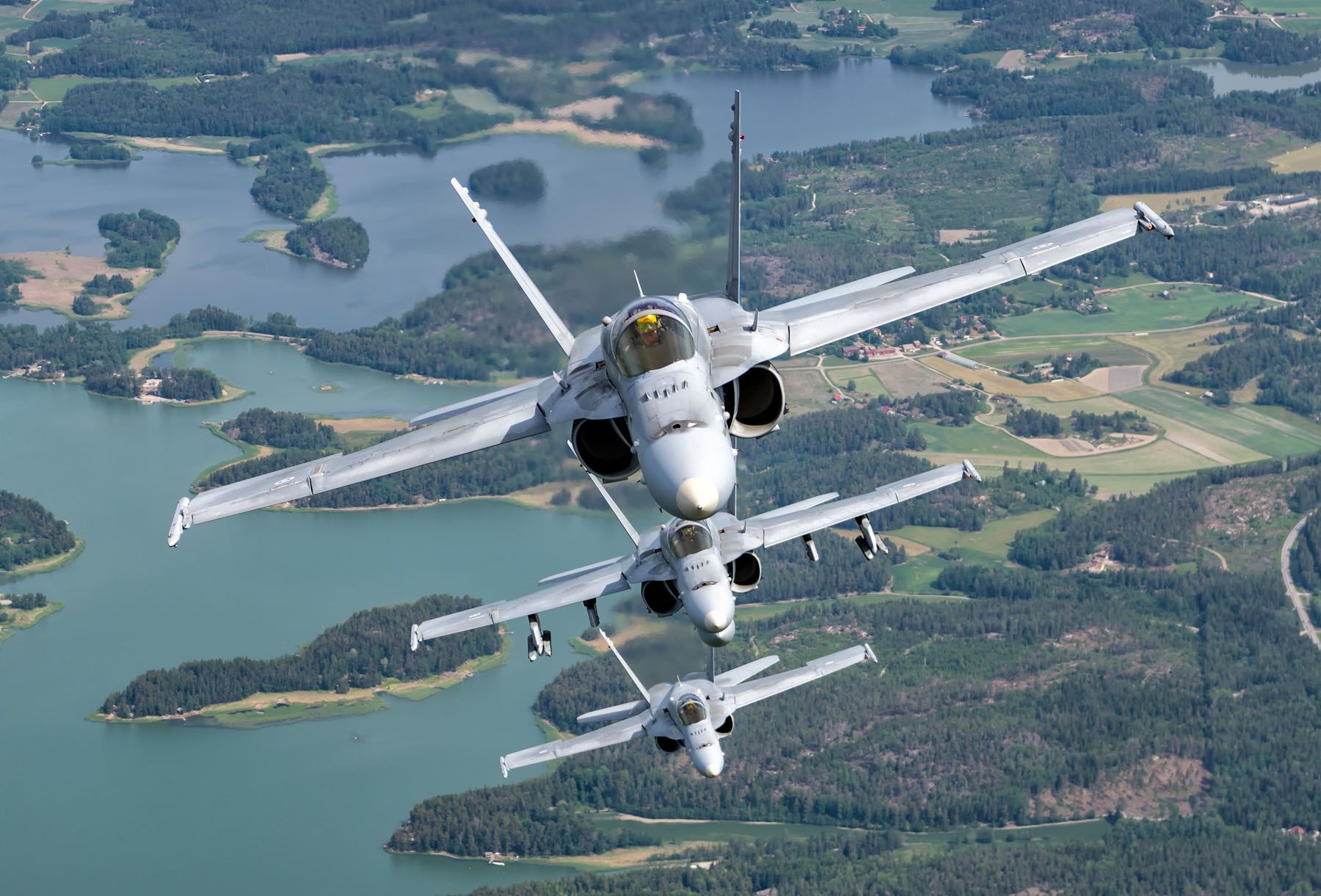
Procurement
By the end of the 1980s, the Ilmavoimat (Finnish Air Force) started to look for a replacement of their Saab 35 Draken and MiG-21bis fleet, that became obsolete for their air defence tasks in support of the country’s neutral policy.
A number of candidates were evaluated. Eventually, the Dassault Mirage 2000-5, General Dynamics F-16C, Mikoyan MiG-29 and Saab JAS 39 Gripen all fell short, as in May 1992, the McDonnell Douglas F-18C/D Hornet emerged as the winner in this competition. A total of 64 aircraft were ordered.
Seven F-18D dual-seat aircraft, serialled HN-461 to 467, were built by McDonnell Douglas (later Boeing) at their location at St. Louis in Missouri, USA. The first one was flown to Finland on 7 November 1995. All 57 F-18C single-seaters serialled HN-401 to 457 were assembled locally by Patria Finavitec at Halli, with deliveries spanning from 28 June 1996 till 8 August 2000.
Obtained as pure air defenders, the aircraft were equipped with a 20 mm M61 Vulcan cannon, a pair of AIM-9M Sidewinders, a APG-73 pulse doppler radar and an ALQ-165 Airborne Self-Protection Jammer (ASPJ) pod.
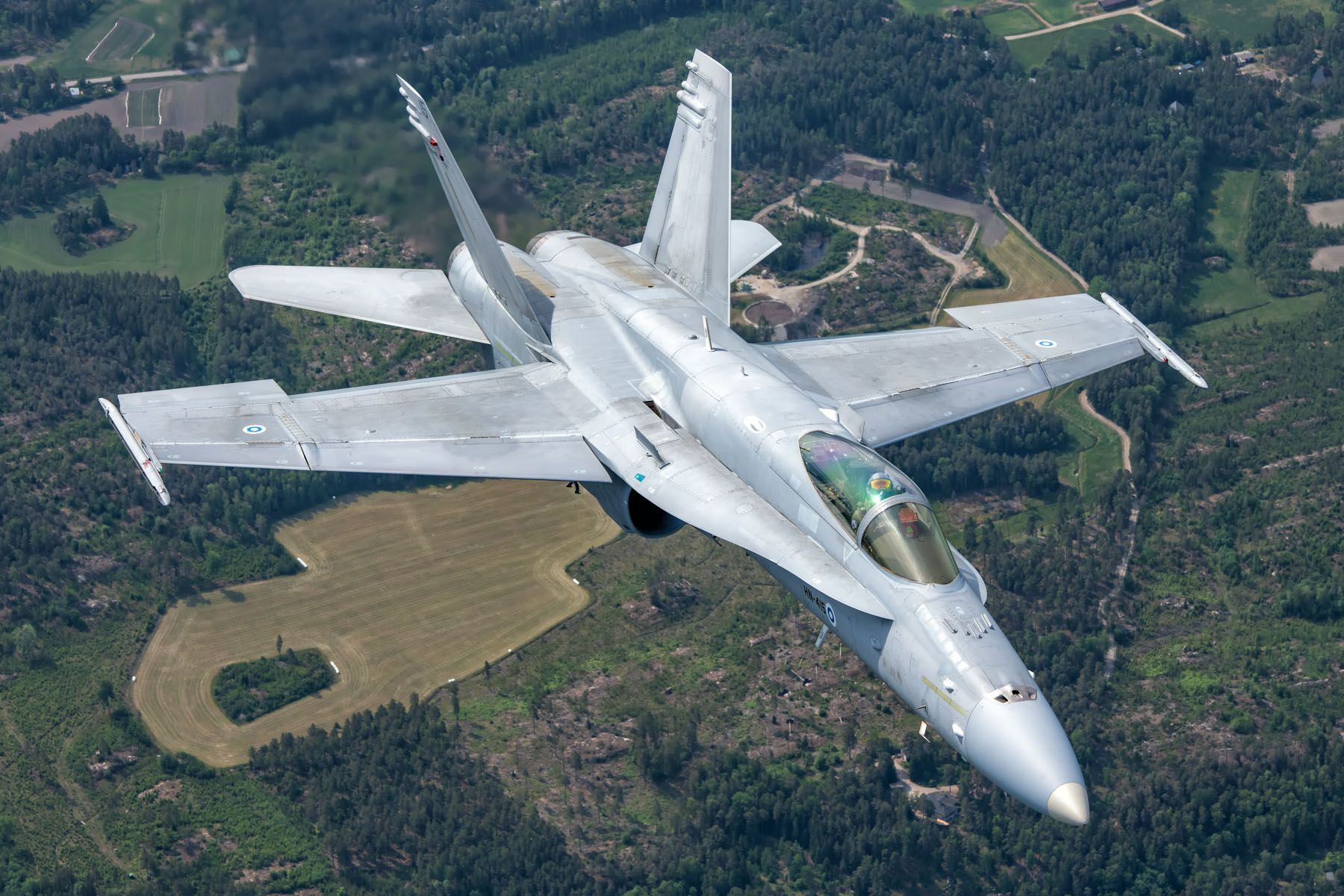
Fighter Squadrons and Air Commands
The Hornets entered service with all three fighter squadrons of the Ilmavoimat operational at that stage.
In 1995, Hävittäjälentolaivue 21 (HävLLv 21 – Fighter Squadron 21) of the Satakunta Air Command at Tampere-Pirkkala was the first unit to receive the new hardware, replacing their Saab Drakens.
Next in line was HävLLv 31. This squadron is controlled by the Karelia Air Command at Kuopio-Rissala, in the central part of the country. It received its first batch of Hornets in 1998, replacing the MiG-21bis.
The third and final squadron to convert to the Hornet was HävLLv 11, based at Rovaniemi in northern Finland as past of the Lapland Air Command. The squadron reached operational status with the Hornet in 2000, simultaneously retiring their last Saab Drakens.
Following the deactivation of HävLLv 21 in June 2014, their aircraft transferred to the other two squadrons, that are still operational today. Their respective home bases are the prime locations for Hornet operations, however, in the event of crises and war, the aircraft can be dispersed around the country to various airfields, including prepared highway strips.
Currently, both HävLLv 11 and 31 are identical in having three different elements. The 1st flight is the operational unit, the 2nd flight takes care of pilot conversion and combat ready training, and the 3rd flight is responsible for air-to-ground training and development.

The first round of upgrades
To keep the Hornet fleet up-to-date, two different Mid-Life Upgrade programmes have been carried out over the years.
The first round of modifications, known as MLU 1, commenced in 2006 and was aimed at maintaining and improving the aircraft’s air-to-air capability. The pilots saw their equipment expanded with Joint Helmet-Mounted Cueing Sights (JHMCS), that combined with the addition of AIM-9X Sidewinders. AIM-120B AMRAAM missiles were also added to the inventory. Furthermore, new Have Quick VHF/UHF radios, an AN/APX-111 IFF interrogator, and a new moving map display (Tactical Aircraft Moving Map Capability, TAMMAC) were installed. The programme was concluded in 2010.
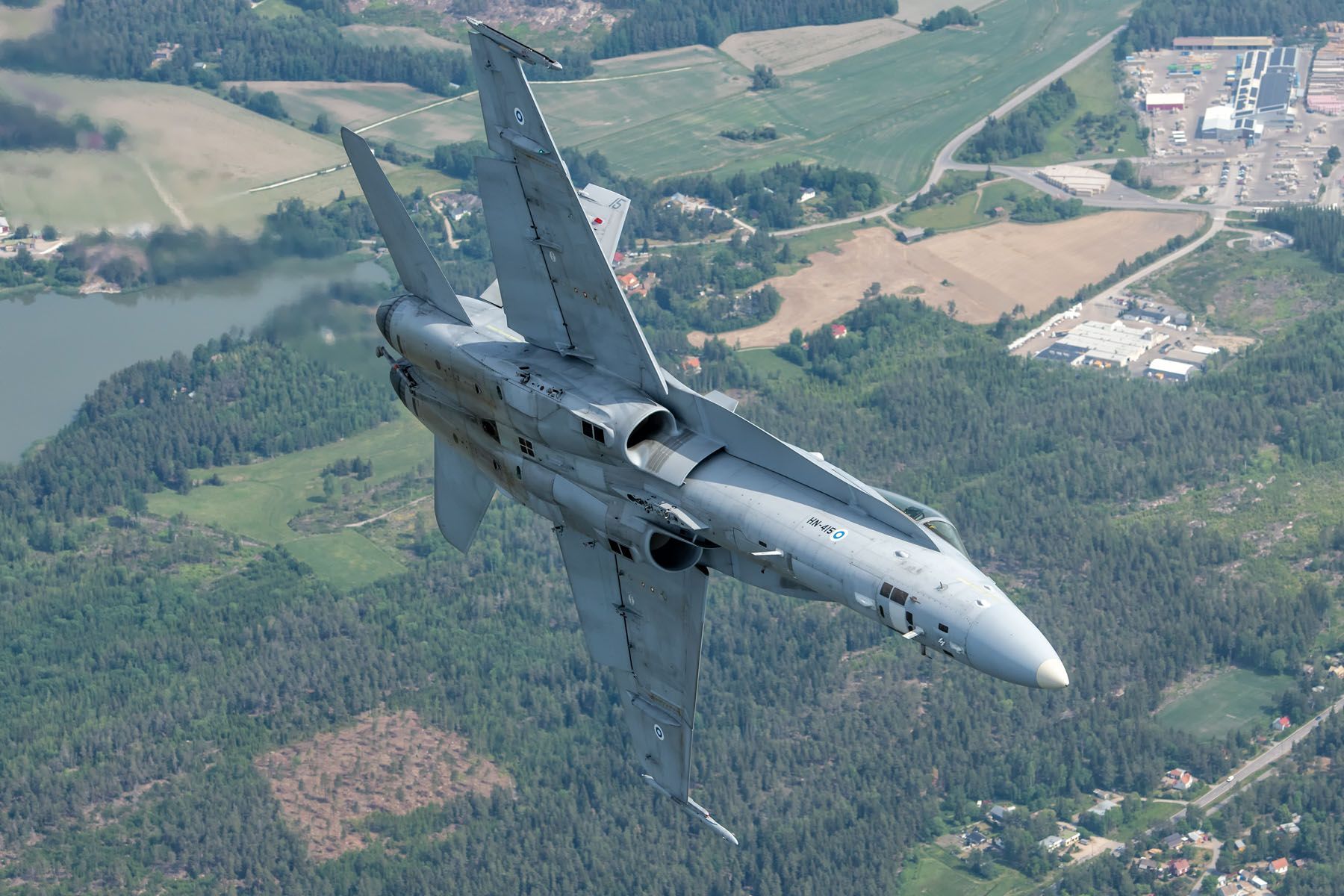
Addition of air-to-ground role
The second stage of the Mid-Life Upgrade, referred to as MLU 2, was quite more extensive. Being an air defence force for decades, MLU 2 added an all new capability to the air force. Upon completion of the programme, the aircraft would be able to carry and deliver standoff air-to-ground weapons. These initially included short-range Joint Direct Attack Munition (JDAM) precision-guided bombs such as the 2,000 lb GBU-31, the 1,000 lb GBU-32 and the 500 lb GBU-38, as well as medium-range AGM-154 Joint Standoff Weapon (JSOW) glide bombs. These new additions required wiring works on all aircraft, and subsequently the new ordnance was subject to operational testing and evaluation in Finland. Several live JDAM drops over the Rovajärvi range in Lapland were conducted, and in 2016, both JDAM and JSOW were cleared for use.
In April 2016, two Hornets and some ten airmen were detached to Naval Air Weapons Station (NAWS) China Lake in Nevada, USA for trials and flight tests regarding the AGM-158 long-range Joint Air-to-Surface Standoff Missiles (JASSM). This part of the programme was completed in September 2017.
The AIM-120C-7 version of the AMRAAM missile increased the aircraft’s air defence capacity. Apart from the new ordnance options, AN/AAQ-28 Litening targeting pods were acquired, and BOL chaff/flare dispensers were obtained for self-protection. Also, Link 16 datalink was added for both international compatibility and to enhance information exchange to support network-centric operations within the Finnish defence organisation.
Other upgrades included liquid crystal displays (LCD) in the cockpit, mission computer software updates for the new ordnance, and Multifunctional Information Distribution System Joint Tactical Radio Systems (MIDS-JTRS).
The Hornet’s air-to-ground weapons as a new option enables the Ilmavoimat to employ effective precision-guided weapons for expeditious and flexible support of joint operations. The air force now is capable of supporting joint combat not only by repelling airborne attacks but also employing weapons against fixed targets where instantly required.
The expansion of roles also resulted in a change of the aircraft’s designation. After the MLU 2 programme, the F-18C/Ds would be referred to as F/A-18C/Ds in line with other operators of this type of aircraft.
Between 2012 and 2016, all 62 remaining Hornets underwent MLU 2. The first one re-entered service in Spring 2013. The last aircraft (F/A-18D HN-465) rolled off Patria Aviation’s production line at Halli on 9 December 2016.
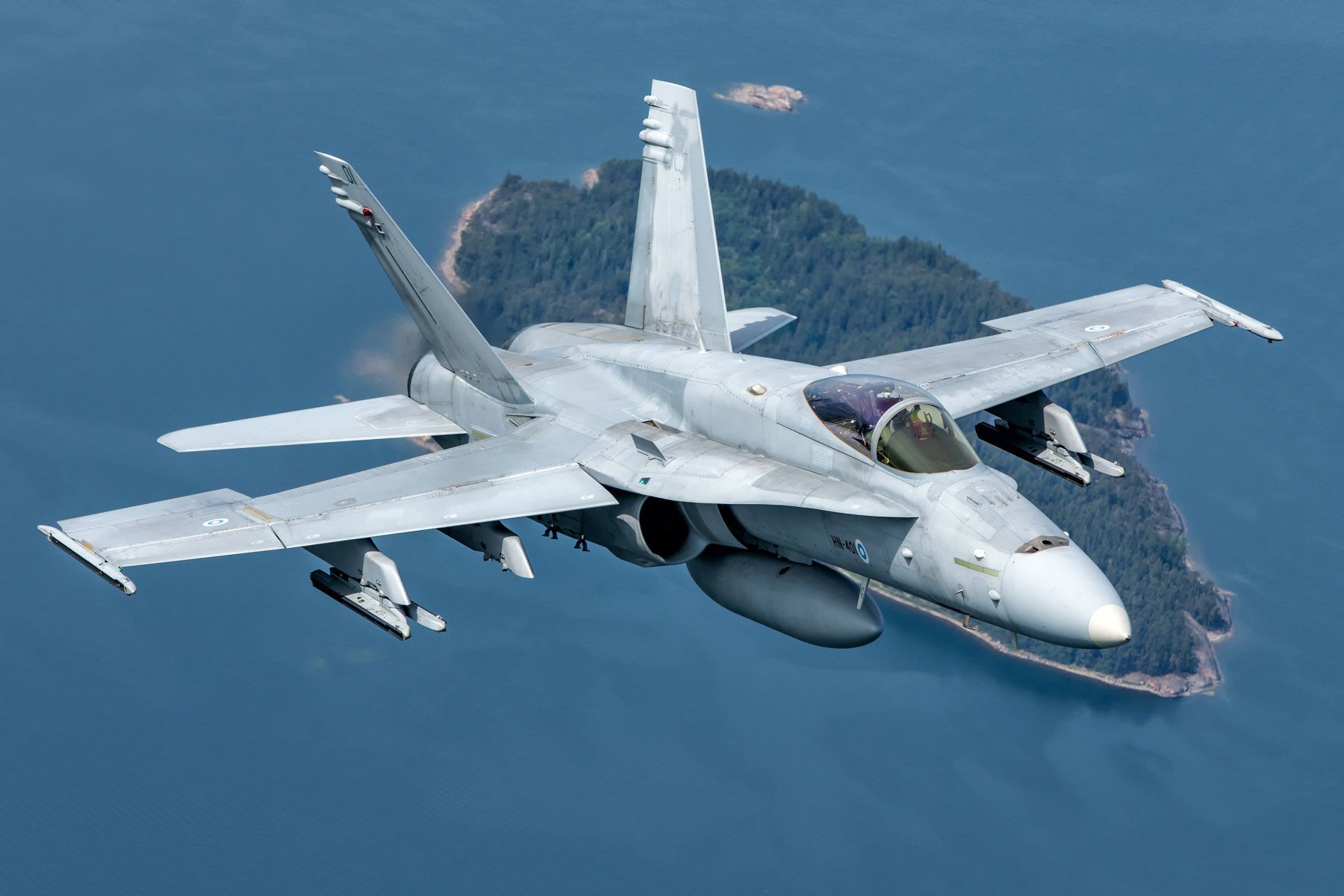
Pilot training
New air force pilots attend the Ilmasotakoulu (Air Force Academy) at Tikkakoski. Annually, some 40-45 students enter the elementary flight training or Phase I for the Reserve Flight Officer Course. After 55 flight hours (including 20 on the simulator) on the Grob G115E, around 15 are selected to join Phase II or the basic flying training syllabus for the Cadet Course. Training is continued on the G115E for another 80 flying hours of which 25 on the simulator.
The Grob G115E trainer fleet consists of 28 aircraft that were recently delivered to replace the school’s Valmet L-70 Vinka trainers in the same roles. The Grob fleet and its associated training systems are provided by Patria’s aviation business unit.
Phase II graduates continue their training on the BAe Hawk jet trainer. Phase III, the advanced flying training course, covers 50 flying hours plus 55 simulator hours in the Hawk I syllabus. This is followed by the Hawk II syllabus for Phase IV also known as the tactical flying training course, during which the student logs another 110 flying hours alongside 35 simulator hours.
Fighter Squadron 41 (HävLLv 41) is responsible for Phase III and IV flying training, for which it is equipped with 16 former Swiss Air Force BAe Hawk Mk 66 trainers and some 20 remaining Hawk Mk 51/51As. All these aircraft have upgraded avionics including the so-called Hawk-Link that enables LVC (live virtual constructive) training. In this environment, even complex beyond-visual-range scenarios can be conducted.
Future Hornet pilots join one of the operational squadrons for further training. Phase V handles the type conversion, while Phase VI prepares the pilot to become combat ready.
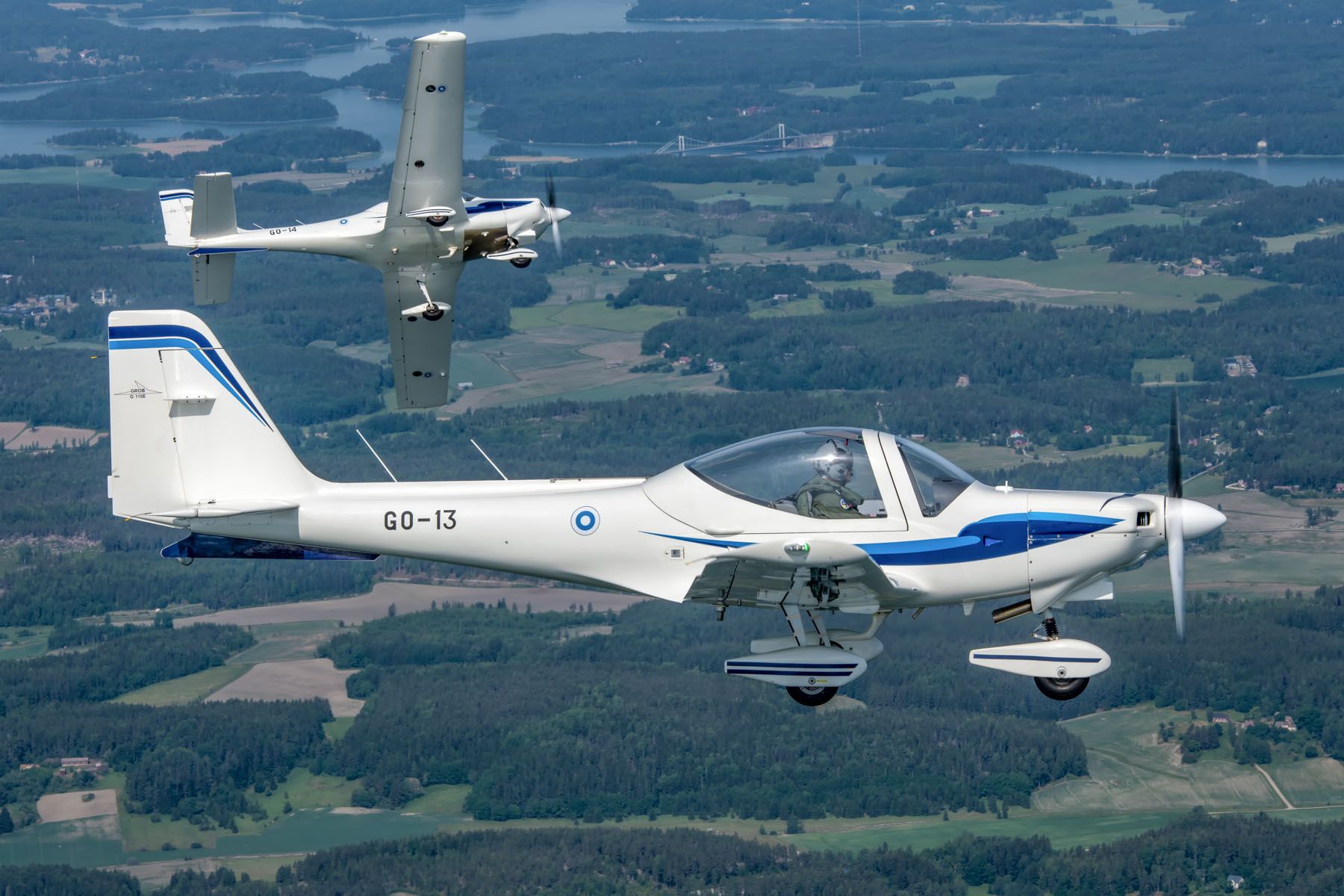
Frankenhornet
The Finnish Air Force has a very good safety record in relation to their Hornet operations. Nevertheless, incidents in a high-risk environment are inevitable, and a few have occurred.
On 8 November 2001, two F-18C aircraft (HN-413 and HN-430) from the Satakunta Air Command were involved in a mid-air collision. This mishap however marked the start of a peculiar story, with an even more thrilling end.
While the pilot of HN-430 successfully ejected from his aircraft that subsequently crashed, his colleague in HN-413 managed to land safely at Tampere with one engine inoperative. The aircraft was substantially damaged, but after a thorough inspection, it was decided to rebuild the aircraft. Not in its original appearance, but as a two-seater, since the air force had expressed the requirement for an extra dual-seat Hornet.
How to make this possible? Well, from Canada a redundant CF-188B airframe (188920) was bought, and parts of both this aircraft and the damaged HN-413 were used by Patria to build a new aircraft, dubbed the Frankenhornet. The whole project would eventually cover some €15 million and 100,000 hours of work. After construction and ground testing was complete, HN-468 entered a flight test programme on 3 December 2009, prior delivery to the air force.
Then, disaster struck. During a test flight on 21 January 2010, the crew could not recover control after a tail slide. Both pilots were able to exit the aircraft around 14,800 feet and the aircraft crashed in a field near Juupajoki with high speed, completely destroying this unusual aircraft.
Other incidents involving Finnish Hornets include a mid-air collision between HN-415 and HN-438 on 21 January 2010 with both aircraft recovering safely, and another (HN-428) that exited the taxiway. The pilot accidentally landed on this in darkness in foggy conditions, while HUD symbols made it difficult to visualize the real runway. The aircraft ended up in a snow bank but was repaired.
Today, all remaining 55 F/A-18C and seven F/A-18D are still in operational service.
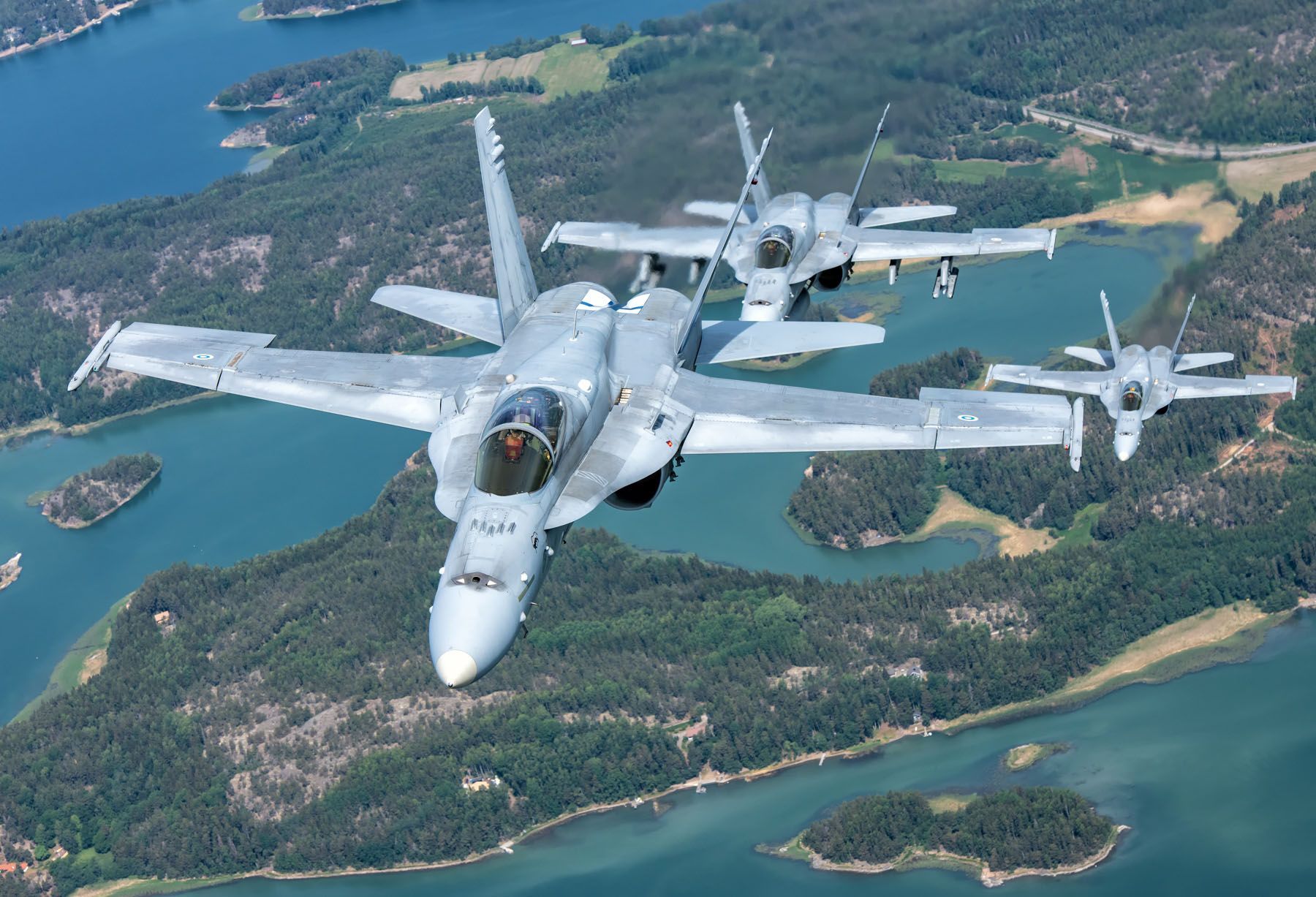
F-35
During the remaining operational life span, the aircraft might still see some structural reinforcements, along with the necessary overhaul of airframes and engines. Apart from that, there is no post-MLU 2 work planned, as a new kid is on the horizon.
Finland started the HX Fighter Programme to replace the Hornet in June 2015. The five key considerations set out were a multi-role capability, security of supply of components and systems, industrial cooperation with Finnish companies, costs of procurement and operation for its life span, and security and defence policy implications. A budget ceiling of €10 billion was set by the government in October 2019 while aiming for some 64 aircraft.
Upon requests of the Finnish defence organisation, five manufacturers entered the selection and bidding process in 2016. These included the Eurofighter Typhoon and the Dassault Rafale, however, both did not make it to the final cut. Saab’s offer included 64 JAS 39E Gripens, 2 Saab/Bombardier GlobalEye AEW&C aircraft and an option for JAS 39F dual-seaters. Boeing’s proposal comprised 50 F/A-18E and 8 F/A-18F Super Hornets, 14 EA-18G Growlers, and a wide range of systems, ordnance and spares, according to a potential Foreign Military Sales approval.
But in the end, the order was secured by Lockheed Martin, adding another customer for their Lightning II. On 10 December 2021, the acquisition of 64 F-35As was announced. A year before, in October 2020, the FMS sale for both the aircraft and equipment was approved. Armament include AIM-9X Block II+ Sidewinder and AIM-120C-8 AMRAAM missiles. Air-to-ground ordnance include GBU-53/B Small Diameter Bombs, AGM-154C-1 JSOW C-1 tactical missiles and AGM-158B-2 JASSM-ER (extended range) missiles. On top of that, JDAM guidance kits will be delivered for both GBU-31 and GBU-38/54 bombs.
The whole F-35 programme including procurement, systems, ordnance and spares is worth just under the budget ceiling set earlier. Crews will start training in the USA in 2025 on their first F-35s. Deliveries to Finland will start in 2026, and between 2028 and 2030, they will gradually replace the Hornets with HävLLv 11 and 31. Rovaniemi will be the first base to receive the F-35.

NATO
The Russian invasion into Ukraine in 2022 had an immediate effect on Finland’s position. The country shares a large border with Russia, and although tensions had been minimal until then, the country has always maintained well-trained and equipped armed forces to cope with any threat. Russia’s aggression however did raise concerns about their territorial integrity, and this put joining NATO on the table – a step considered before, but a majority rejected this idea until the Russian invasion proved to be a game changer. Together with Sweden, Finland presented their bid to join the alliance in May 2022. On 4 April 2023, Finland officially joined the alliance.
In March 2023, now former Prime Minister Sanna Marin suggested while visiting Kyiv to donate an unspecified number of Hornets to Ukraine. This surprise move raised concerns back home, as the Finnish Air Force is currently not in a position to reduce its capability, according to the defence ministry.
Meanwhile, the Finnish Air Force trains their Hornet crews at high level. The large bi-annual Arctic Challenge Exercise(ACE) in the Nordic countries provide useful and realistic challenges to check their operational level and readiness. International exercises such as Air Defender 2023 also offer welcome opportunities to train in complex scenarios together with their new NATO partners. ■
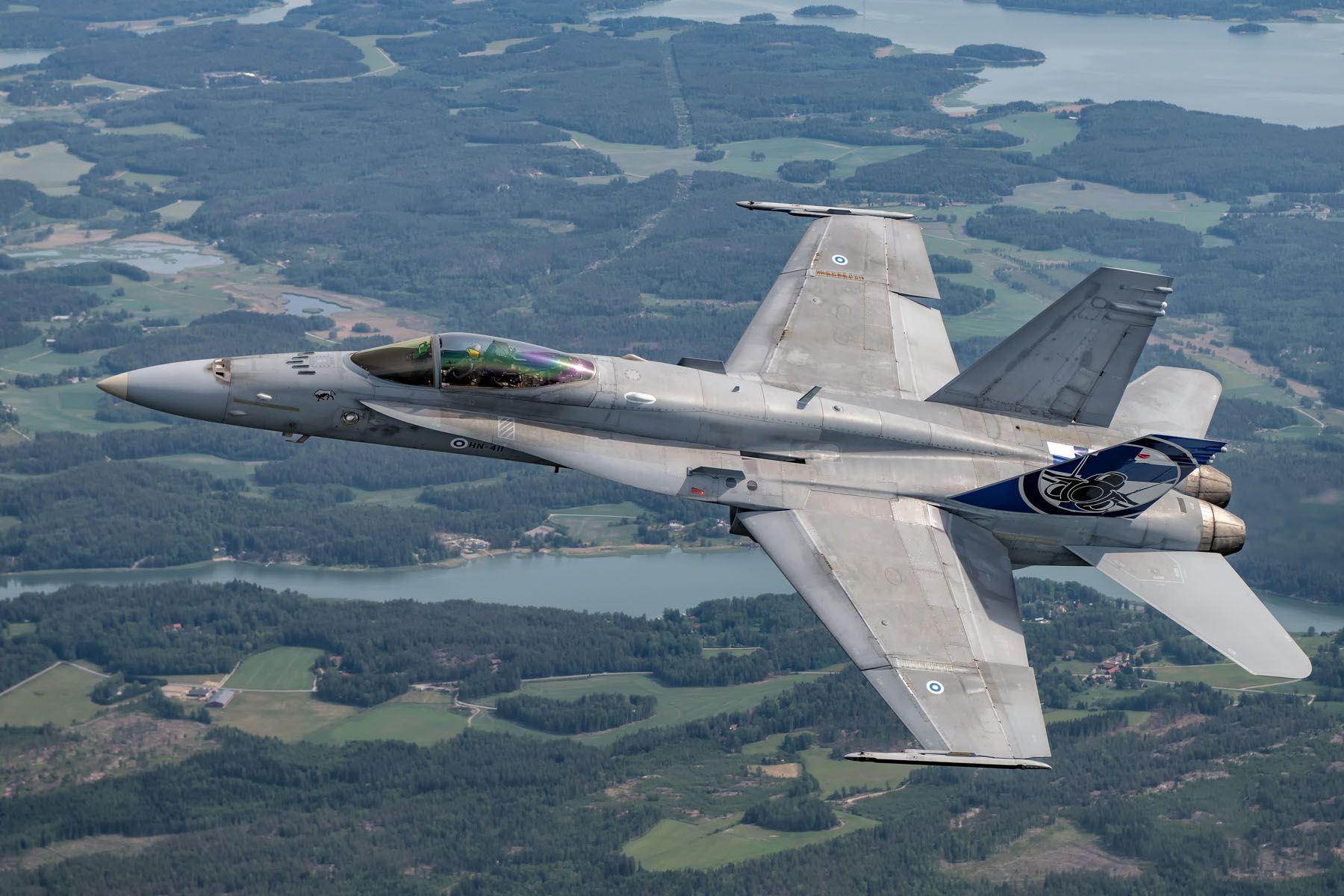
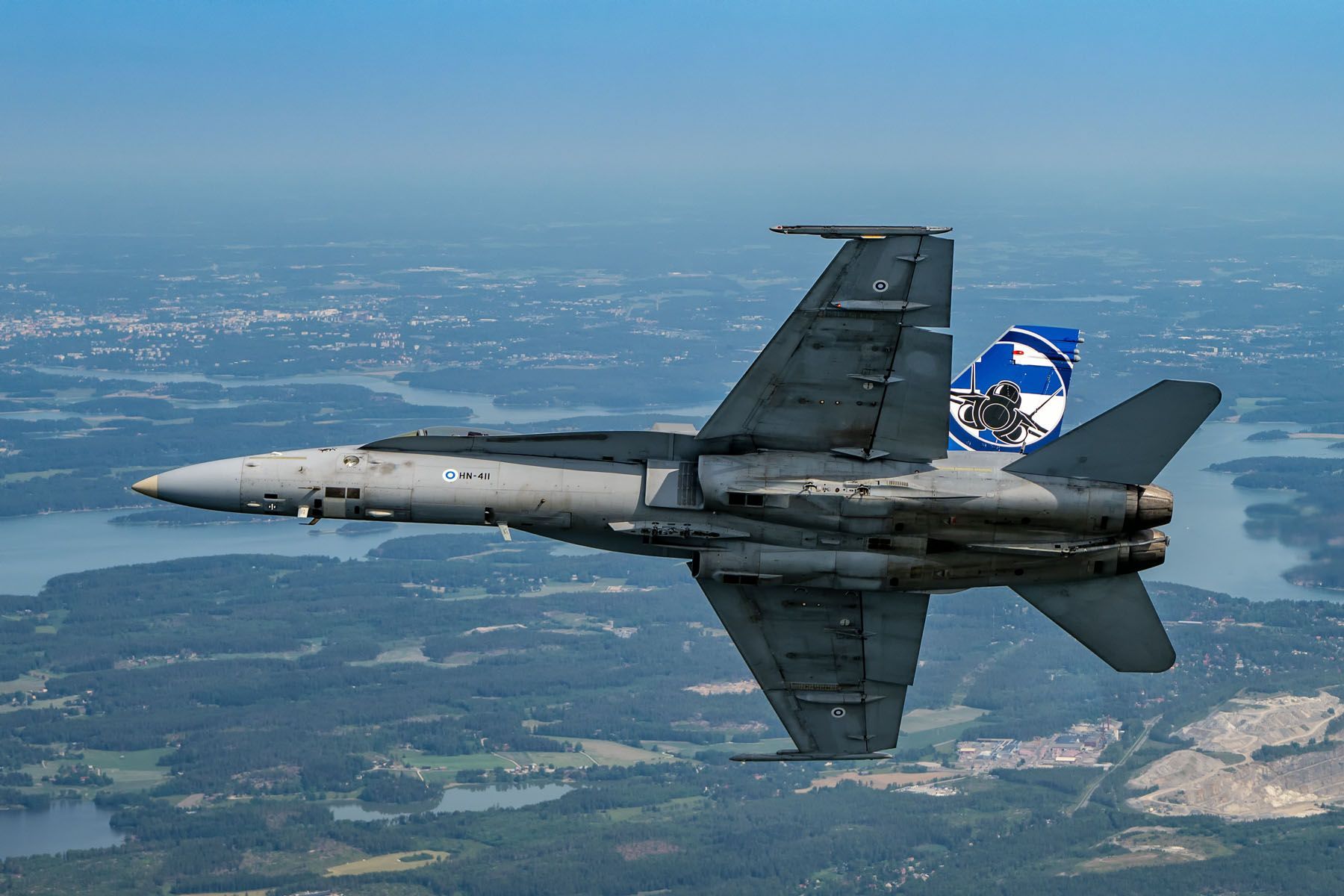
The author would like to thank Ms. Tuulia Kujanpää of the Air Force Command Finland Public Affairs for her kind assistance to this report.